by California Casualty | News |

Why do we still do it?
I’m talking about Sunday’s time change. Almost everyone I talk to dreads saying goodbye to daylight saving and turning our clocks back this weekend for the return of standard time. We might regain an hour, but it’s depressing leaving work in the dark at 5 p.m.
It’s more than just an inconvenience; the “fall back” can be a real health hazard. Some 40 million of us already have some type of chronic sleep disorder and 40 percent of us admit we’ve recently fallen asleep while driving. Sleep experts say that setting the clock back an hour is contrary to how our body clocks work, leading to some interesting health effects –both good and bad – that you may not have known about.
- Your risk of being in a car accident may increase
A Texas A&M University study found there was a seven percent increase in car crashes the week after daylight saving time comes to an end, with morning crashes jumping 14 percent. Researchers think the hour difference affects us much like jet lag when we disrupt our normal sleep pattern
- Your odds of a heart attack may drop
In a 2014 study, researchers found a 21 percent decrease in heart attacks on the Tuesday following the fall time change. That compares to the 24 percent increase just after the switch to daylight saving.
- Your mood may improve
As the weather gets colder and daylight diminishes, we tend to be more depressed. But in the weeks following the fall time change, your wake time may actually sync with the sunrise, giving you a temporary mood a boost. Exposing yourself to morning light is one of the most powerful things you can do to stave off winter blues.
- The quality of your sleep may take a hit
Many of us have trouble after we set the clocks back; we actually stay up later because we aren’t tired when it’s bedtime and our brain is still programmed to get us up an hour earlier than the clock says. One study suggests that instead of capitalizing on the supposed extra hour of sleep, you may actually lose sleep the week after the fall time change. A Finnish study found that the quality of sleep after the fall transition actually decreases for many of us.
Now you probably already know if you are sleep deprived, but just in case, you can take the National Sleep Foundation’s “sleepiness test” to show how you stack up against other Americans.
And, if you find turning the clocks back leaves you out of sorts, overtired and more cranky than usual, here are some recommendations from the Sleep Foundation:
- Avoid napping during the day
- Limit stimulants such as caffeine, nicotine and alcohol in the late afternoon and evening
- Use relaxing exercise like yoga or meditation before bedtime
- Stay away from heavy, late meals
- Don’t experiment with spicy dishes for dinner
- Expose yourself to as much natural light as possible
- Establish a regular, relaxing bedtime routine
- Keep the bedroom for sleep – eliminate the TV
- Make your bed and sleeping area as comfortable as possible
Oh, here are a couple last things:
- Don’t forget to set your clocks back Saturday night so you won’t show up an hour early for church or other morning activities.
- Don’t forget to test and change the batteries in your smoke and carbon monoxide detectors.
Don’t lose sleep worrying about your auto and home insurance; contact a California Casualty advisor today for a free, no hassle policy review and comparison at 1.800.800.9410 or visit www.calcas.com. You’ll sleep better knowing you have the best coverage with exclusive professional discounts.
Sources for this article:
https://www.better-sleep-better-life.com/insomnia-statistics.html
https://www.yahoo.com/health/4-weird-ways-the-time-change-affects-your-health-101686684992.html
https://www.sciencedirect.com/science/article/pii/S1087079212001141
https://www.biomedcentral.com/1472-6793/8/3
https://sleepfoundation.org/ask-the-expert/sleep-hygiene
by California Casualty | Safety |
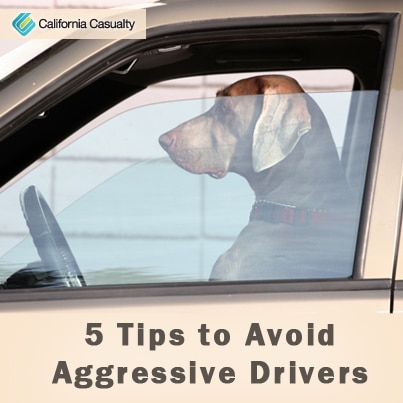
By: Mark Goldberg
I couldn’t believe it (well, then again nothing is that surprising these days) – the guy in the car ahead of me was shaving. It was early morning as we drove on a narrow two-lane road. He swerved numerous times as he continued grooming behind the wheel. It could have ended badly since there were school buses and elementary school children on the side of the road; luckily nobody was hit or hurt. The sad part is that he was oblivious to how dangerous his antics were.
Then, on a recent trip to visit our daughter, my wife and I witnessed drivers passing on the far right on the interstate, wildly veering across three lanes and then back to the left lane. Others were tailgating at such a high speed that there was no way they would avoid slamming into the car ahead if traffic suddenly came to a stop.
We’ve all seen it; people with angry faces, often gesturing, as the careen through our thoroughfares as if they were the only one who mattered. As we encounter the growing number of distracted and aggressive drivers, it got me thinking about how we all need to be hyper-aware and drive with extra precaution.
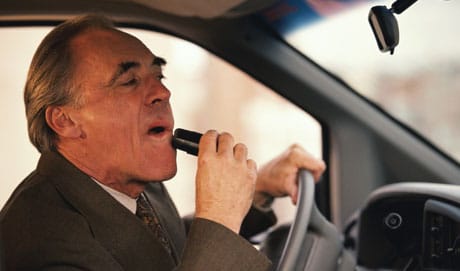
So, what can you do?
- Stay out of the left lane unless you are passing
- Don’t challenge them by speeding up or trying to block them
- Follow the speed limit
- Avoid eye contact
- Report them to authorities providing vehicle description, license plate number, location and direction of travel
Gesturing back or making eye contact can often lead to road rage.
And here are some defensive driving tips that can help you avoid confrontations with aggressive drivers:
- Keep scanning the area ahead and behind you
- Drive with both hands on the wheel to better respond to dangers
- Wear your seatbelt
- Slow down in bad weather
- Have an escape plan
- Don’t follow too close
- Avoid driving when tired or drowsy
Experts recommend that you take a defensive driving course to learn these techniques; besides it can also qualify you for a discount on your auto insurance.
California Casualty is dedicated to preventing this type of driving behavior. That’s why we are proud to be a major sponsor of Impact Teen Drivers, a nonprofit formed with the law enforcement and education groups that uses peer-to-peer tactics to educate teen and young adults about the dangers of distracted and reckless driving. Learn more at https://www.calcas.com/web/ccmc/impact-teen-drivers.
Before you hit the road, make sure you have adequate protection in case you encounter a distracted or aggressive driver. Call a California Casualty advisor today for an auto policy review or comparison at 1.800.800.9410 or visit www.calcas.com.
Sources for this article:
https://www.nhtsa.gov/people/injury/aggressive/Aggressive%20Web/index.html
https://www.nhtsa.gov/people/injury/enforce/aggdrv.html
https://auto.howstuffworks.com/car-driving-safety/accidents-hazardous-conditions/10-safe-driving-tips.htm#page=9
https://www.distraction.gov/
https://roadragers.com/road-rage-advice.htm
by California Casualty | Firefighters |
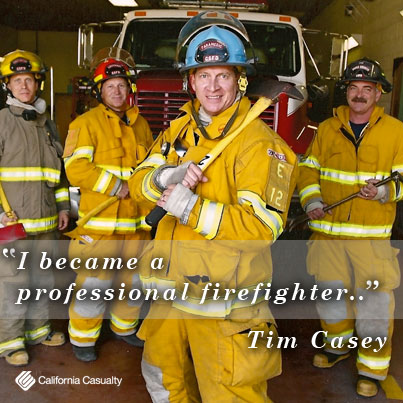
Tim Casey describes himself as, “a retired firefighter/paramedic, author, lecturer, public speaker and an alcoholic. As a public servant for more than 30 years, I know the hero business from the inside out, and I also know the costs of that profession; the human cost. My passion is trying to help save the lives of lifesavers. Firefighters are dying in record numbers, not on the job but by their own hands. Clinicians and therapists, although well intentioned, do not know how to help emergency workers and I want to help them understand us, and maybe save some lives along the way.
I became a professional firefighter/paramedic at 19 years of age and proceeded to work in that field for the next 31 years. Best job I ever had, the worst job I ever had, and it spanned four decades from 1979 until I retired in 2009. I delivered nine babies over those years, helped save hundreds of lives, and fought enough fire to keep me content into my golden years.
I became a firefighter quite by accident. Right out of high school, I went to work at the largest car dealership in my hometown. Things were going along well until the day I gave my unsolicited opinion to the general manager of the store. He admired the frankness of what I had to say but not the content of my statement.
Later that same day I called my father to tell him the news of my recent separation from work and to ask if he might be aware of any job openings. As in turned out he did know someone was hiring. The chief of a small fire department on the outskirts of town was looking for a firefighter. The next day I interviewed for the position and the day after that I was a fireman.
Looking back, I was too young, inexperienced, and naive to have made that decision; I had no idea of what was to come. I had stumbled into the coolest jobs any man could have. Overnight I went from being a zero to being a hero, an American icon, a firefighter.
I quite literally grew up in fire stations; I started as a teenager, I was married and divorced twice while I was a firefighter, I had three children, became an alcoholic, and survived a suicide attempt over those years. Throughout my entire adult life I was always part of a team and had tremendous resources available to me for all my decision-making – my fellow firefighters were more than willing to help me, especially the older guys who got a vicarious thrill out of hearing about my adventures.
The belief that we as firefighters are a brotherhood and sisterhood is deeply ingrained in our psyches from the outset of our career. No one outside our culture has any grasp on what it is to be a firefighter. People can imagine, but they can only guess how they might feel if they were confronted with the realities of our job.
However, their best guesses are based on film, TV, or literature; they are just that, a guess. If you have never walked in our boots, never walked through fire, death, and disaster, then you will never get it, you will never understand how we feel about each other.
That culture is one of the biggest problems facing the fire service, the notion that being a firefighter prevents us from being normal feeling people, from having emotions, from the damage our experiences, burden us with. It has to be abandoned, or we will suffer more and more tragedies like a result of “pulling on our big boy pants.”
We must learn to care for our own with the same vigor we extend to our customers. We must protect our people from these horrors, care for each other and our families, or we will attend more funerals and us will suffer the loss of great people because of pride, toughness, and bravado. I share my personal story of alcoholism and suicide so that when another firefighter is suffering and feeling they are alone in their struggle, they know they are not alone – that at least one other firefighter has stood in their shoes and made it out of the darkness. It’s me; I have, and I am willing to help in anyway I can.
Below are links to some valuable resources for a starting point.
4-steps-to-help-a-mentally-distressed-firefighter
Firefighter Behavioral Health Alliance
Initiative 13
by California Casualty | Homeowners Insurance Info |

The mouthwatering smell of hamburgers, chicken and other grilled foods will soon start filling the air – but as Fourth of July weekend arrives (the unofficial start of BBQ season) the National Fire Protection Association (NFPA) is warning grillers to be careful.
According to a 2013 NFPA report, an average of 8,600 home fires were started each year between 2007 and 2011 by gas or charcoal grills, 60 percent of those flared up on a balcony, porch or outside patio.
The NFPA advises everyone to make sure the grill is working properly and review safety tips before firing it up. It’s extremely important to check gas canisters and hoses for cracks, breaks or leaks.
Did you know ESPN SportsCenter anchor Hannah Storm was severely burned in a gas grill accident? She has recorded several videos to share her story and raise awareness about grilling safety.
Here are some home grilling safety tips from the NFPA:
- Read you grills safety tips and warning information before using it
- Only use propane and charcoal outdoors
- Check gas tanks and hoses for leaks
- Stay alert when grilling
- Keep grills well away from the house, deck railings, overhanging eaves and branches
- Never leave the grill unattended
- Be careful when disposing charcoal; always make sure coals they are completely out and put into a meal container with a lid
Accidents happen. Make sure your home or apartment is fully protected with the right amount of insurance. Call a California Casualty advisor today for a policy review, 1.800.800.9410 or visit www.calcas.com.
Resources for this article:
https://www.nfpa.org/
by California Casualty | Homeowners Insurance Info |
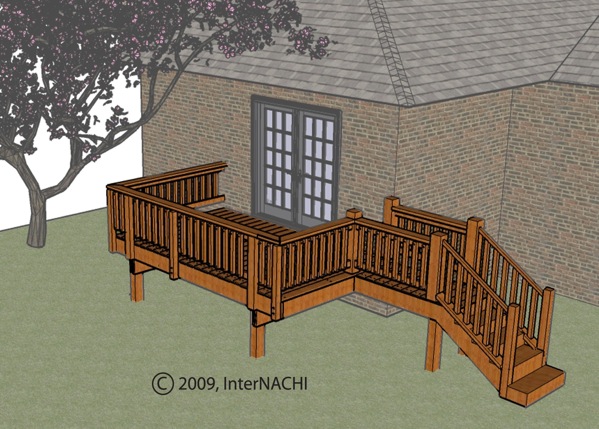
Decks; they come in all sizes, shapes and age. They’re an extension of our living space as the weather warms and we spend more time outdoors. They can also be an accident waiting to happen.
A study by the Consumer Product Safety Commission estimated that close to 50,000 people are injured each year from falls off decks, porches and stairs; about 15 percent of those were from a structural failure or collapse.
Summer is when most deck collapses are reported. The International Association of Certified Home Inspectors says of the more than 45 million existing decks in North America, only 40 percent are absolutely safe.
Most failures take place while the decks were occupied and approximately 90 percent were a result of separation of the house and the deck ledger board. While age can be a factor, deck collapse can take place on any deck that was not properly installed.
Here are five deck safety and inspection tips from the North American Deck and Railing Association (NADRA) that can keep the summer BBQ from becoming a trip to the hospital:
- Search for split or decaying wood including support beams and joists below
- Test railings and banisters to make sure they are firmly attached
- Check fasteners to make sure they have not come loose or corroded
- Step carefully looking for loose boards or spongy areas
- Clean up debris like leaves branches and other things that can cause slipping and mildew
NADRA also urges homeowners to test deck stairs, make sure grills and fire pits are on a non-flammable pad and away from walls and overhangs, and to consider proper lighting for nighttime use.
Michael Beaudry, executive vice president of the NADRA wants people to know about the importance of annually inspecting their decks. “Outdoor structures like decks are exposed to sun, rain, snow and extreme temperature changes over the years. The need to maintain and inspect them is critical for keeping decks strong and safe.”
You can find an extensive point-by-point deck inspection check list from the International Association of Certified Home Inspectors at https://www.nachi.org/deck-inspections.htm.
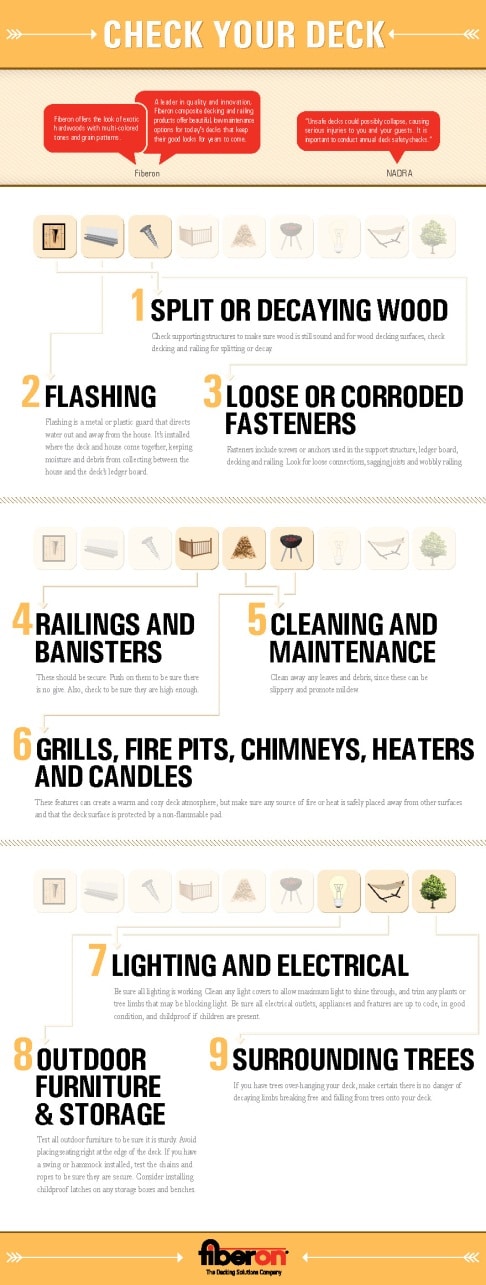
Another piece of protection is to inspect your home or renters insurance. Now’s a great time to review your policy and make sure you have the proper liability coverage if someone gets hurt at your home. Call a California Casualty advisor today at 1.800.800.9410 or by visiting www.calcas.com.
Resources for this article:
https://nadra.org/
https://www.buildingonline.com/news/pdfs/Outdoor-Deck-and-Porch-Injury-Study.pdf
https://www.nachi.org/deck-inspections.htm
https://www.fiberondecking.com/blog/2015/how-safe-is-your-outdoor-deck-space
This article is furnished by California Casualty, providing auto and home insurance to educators, law enforcement officers, firefighters and nurses. Get a quote at 1.800.800.9410 or www.calcas.com.







